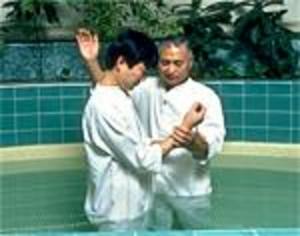I have always imagined Gypsies and their nomadic lifestyle through a romantic lens. My image of Gypsies no doubt derived from classic masterpieces such as Bizet’s “Carmen” and Victor Hugo’s “Hunchback of Notre Dame”. The lives of these mysterious people seemed to be one of excitement, allure, and total freedom. The reality is, however, that this fantasy of mine was just that, a fantasy. I have been researching Gypsies and their traditions during these past few weeks and, in the process, I’ve learned many actual facts about Gypsies – both good and bad.
20 Facts About Gypsies
1. Gypsies refer to themselves as Romanies, Manouches, Tziganes and Gitans. The Roma (or Romani) are the largest and most recognizable group and the one that has most jealously guarded their Gypsy traditions.
2. It is believed that they were likely called “Gypsy” for the first time by Europeans who mistakenly thought they had come from Egypt.
3. DNA and genetic mutation studies indicate that the Gypsies probably originated somewhere in northern India.
4. Gypsies are estimated to number between 10 and 12 million.
5. Although most Gypsies are located in Central and Eastern Europe, today they can be found worldwide. For instance, some experts believe that there are as many as 1,000,000 Gypsies in the U.S. alone.
6. Not all Gypsies are nomads that travel around in caravans. In fact, the majority of Eastern European Roma Gypsies have been sedentary for centuries.
7. Roma Gypsies speak various dialects of Romani, which is an Indic language related most closely to modern Hindi.
8. Unmarried Gypsies (young men and women) are not allowed to socialize alone together. Virginity is considered essential in unmarried women.
9. Many Gypsy couples marry in their mid-teens and marriages are customarily arranged by the parents of the groom.
10. Each year in May the various Gypsy groups gather in Southern France from all over the world for a pilgrimage to Saintes-Maries-de-la-Mer. The pilgrimage is an occasion for reunions of friends and family. To see a collage of images from one of these pilgrimages you can click on this You Tube video.
20 Facts about Gypsies, Continued
11. About 500,000 Gypsies lost their lives during the Holocaust in concentration camps during World War II. Hitler considered them to be the lowest category in terms of racial hierarchy.
12. In popular lore, Gypsies are well-known as musicians, dancers, and fortune-tellers. However, other traditional occupations amongst the Gypsies include metalworking, horse trading, and animal training.
13. The Gypsies of Spain, referred to as Gitans, gave Spain what many consider the best of Flamenco and some of it’s most famous dancers.
14. Gypsies place great value on the extended family. Even in urban areas and among highly assimilated Gypsy families, the extended family is strong.
15. Most people believe Gypsies are all darker-skinned, with dark hair and eyes. However, in the course of their wanderings, Gypsies have occasionally mixed with non-Gypsies, so that some are even blond-haired and light-skinned.
16. Gypsies actually have very strict rules about hygiene, including very frequent hand-washing and requiring that toilets be away from living areas.
17. Gypsies usually adopted the religion of their country of residence. Today the greater number are Roman Catholic or Eastern Orthodox Christian.
18. Gypsies are represented in the United Nations with a voting seat.
19. In modern times, various European nations have attempted to completely end the Gypsies’ nomadic way of life by requiring them to register and to go to school and learn trades.
20. In 2005 eight Eastern European countries and the World Bank backed a ten-year program intended to improve the Gypsies’ socioeconomic status.
The Gypsies’ Situation Today
Many negative myths exist about the Gypsy people even into our modern day. Some people think they are dirty and lazy, or that many of them are thieves and even kidnappers of non-Gypsy children. The situation of the Gypsies is often compared to that of the Jewish people. Both have had a long history of persecution, and both have seen a dispersion of their people from their original homeland. However, the half-Jewish, half-Gypsy American author Isabella Fonseca explains why the plight of the Gypsies is unlike that of the Jewish people:
“The Gypsies have no heroes. There are no myths of origin, of a great liberation, of the founding of a ‘nation,’ of a promised land. . . . They have no monuments, no anthem, no ruins, and no Book. Instead of a sense of a great historical past, they have a collective unease, and an instinctive cleaving to the tribe.”
The 20 facts about Gypsies which are listed above, certainly prove them to be a most interesting people. However, my eyes have now been opened to the hardships and negative stereotypes faced by this group that are also a part of their day-to-day existence. You can learn more about the Gypsies in these interesting real-life accounts:
1) Bury Me Standing: The Gypsies and Their Journey Isabel Fonseca recounts her experience of being allowed to enter into the Gypsy world, living and traveling with them.
2) The Gypsies Jan Yoors ran away from his privileged Belgian family and joined a band of wandering Gypsies. Here is his first-hand and highly personal account.
MORE FROM THIS CONTRIBUTOR:
Five Things You Should Know About Costa Rica Before Deciding to Move There
Ten Questions to Ask Before Renting a Property
Making the Most of Your First Time in Paris





